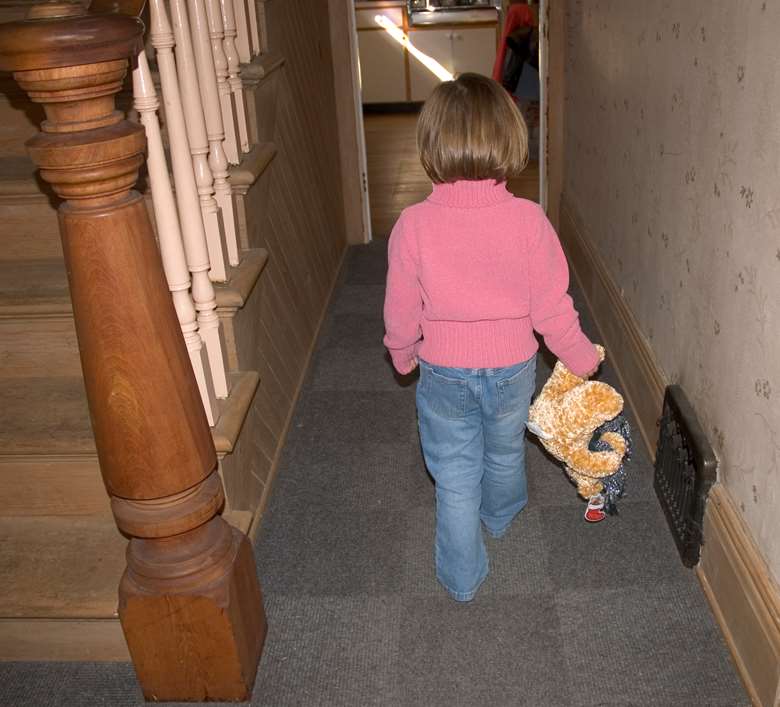Children in poorest postcodes '10 times more likely to end up in care'
Neil Puffett
Tuesday, February 28, 2017
Children in the most deprived neighbourhoods in the UK are at least 10 times more likely to be in care than children in the least deprived areas, a study has found.

Research conducted by seven British universities found that in all four nations of the UK children are over-represented in the most deprived 20 per cent of neighbourhoods.
Contrasting life chances were most apparent at the far ends of the spectrum, with children in the most deprived 10 per cent of neighbourhoods in the UK at least 10 times more likely to be in care than children in the least deprived 10 per cent.
This is based on around one in 60 children being in care in England's most deprived neighbourhoods, compared with one in 660 in the least deprived areas.
Researchers found ‘strong social gradients' in the rates of intervention across the four countries, with each step increase in neighbourhood deprivation bringing a significant rise in the proportion of children either in the care of the local authority, or on a child protection plan.
Academics from the universities of Coventry, Sheffield, Huddersfield, Cardiff, Edinburgh, Stirling and Queen's University Belfast were funded by the Nuffield Foundation to investigate data on over 35,000 children who are either looked-after children or on child protection plans - more than 10 per cent of all such cases open in March 2015, when the study began.
The study, known as the Child Welfare Inequalities Project, found that across the UK, each step increase in deprivation brings with it a rise of around a third in a child's chances of being in care.
In the most deprived neighbourhoods in England, looked-after children rates for white children were five times higher than for Asian children and 75 per cent higher than for black children.
The study also found that children living in equivalent neighbourhoods - whether highly deprived or not - in different local authorities have starkly different chances of being in care, with low deprivation local authorities around 50 per cent more likely to intervene.
Although it was beyond the scope of the study to analyse why this was the case, the researchers said the likely explanation is that - relative to demand - more deprived authorities have fewer resources to allocate to children's services.
Researchers also spoke with local authorities and frontline social work professionals with many staff across the UK reporting feeling "overwhelmed" by the complex level of need they encountered in families, and did not feel that they had the power to change the inequalities that they saw.
Paul Bywaters, professor of social work at Coventry University, who was lead researcher for the study, said: "We've known for years that child abuse and neglect is linked to poverty, but there's been a fundamental gap in our understanding of how a child's family circumstances, and neighbourhood deprivation or locality impacts their chances of the state intervening to improve their life chances.
"This is partly because, extraordinarily, no data is systematically collected and published about the socio-economic background of the families whose children are involved with the child welfare system. Our study puts in place some strong foundations to build on and change that.
"Our ultimate aim is to make reducing inequalities in child welfare a key policy objective, in the same way that tackling inequalities in health and education have been prioritised in recent years. With further austerity measures and fundamental changes to local government financing on the horizon, time is very much of the essence in tackling this most vital of social issues."
Dave Hill, president of the Association of Directors of Children's Services, said that while there has been a big jump in the numbers of children and families requiring help and support over the last decade, funding for services continues to be eroded.
"Whilst it is true that many local politicians have made great efforts to protect spending on children's social care, savings from services such as children's centres and youth work have been required to balance the books.
"When we factor in the pressures in adult social care and other public agencies, especially the police, it is clear that our ability to step in and prevent problems from escalating to crisis point is in real jeopardy.
"The impact of austerity is now all too visible in our communities, particularly the most deprived, there are record numbers of children coming into care and their needs are increasingly complex.
"Poor parental mental health, substance misuse and domestic abuse is sadly becoming more common amongst the families we work with."
Hill has called on the Department for Education to engage with the research team and the ADCS to better understand the issues and challenges raised by the study , as well as the cumulative impact of wider government reforms.
"With further reductions in local government funding expected in the forthcoming budget and fundamental changes to our financing on the horizon, time is of the essence in tackling this most vital of social issues before it's too late," he said.




